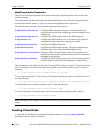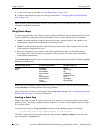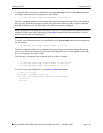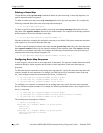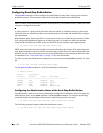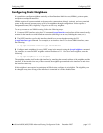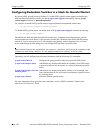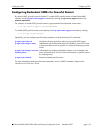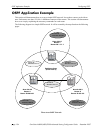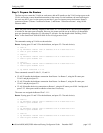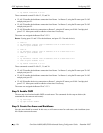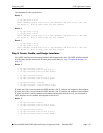
Configuring OSPF Configuring OSPF
page 1-30 OmniSwitch 6800/6850/9000 Advanced Routing Configuration Guide December 2007
Configuring Router Capabilities
The following list shows various commands that can be useful in tailoring a router’s performance capabili-
ties. All of the listed parameters have defaults that are acceptable for running an OSPF network.
To configure a router parameter, enter the parameter at the CLI prompt with the new value or required
variables. For example to set the exit overflow interval to 40, enter:
-> ip ospf exit-overflow-interval 40
To enable MTU checking, enter:
-> ip ospf mtu-checking
To advertise a default external route into OSPF regardless of whether the routing table has a default route,
enter:
-> ip ospf default-originate always
To set the route tag to 5, enter:
-> ip ospf route-tag 5
To set the SPF timer delay to 3 and the hold time to 6, enter:
-> ip ospf spf-timer delay 3 hold 6
To return a parameter to its default setting, enter the command with no parameter value, as shown:
-> ip ospf spf-timer
ip ospf exit-overflow-interval Sets the overflow interval value. The overflow interval is the time
whereby the router will wait before attempting to leave the database
overflow state.
ip ospf extlsdb-limit Sets a limit to the number of external Link State Databases entries
learned by the router. An external LSDB entry is created when the
router learns a link address that exists outside of its Autonomous System
(AS).
ip ospf host Creates and deletes an OSPF entry for directly attached hosts.
ip ospf mtu-checking Enables or disables the use of Maximum Transfer Unit (MTU) checking
on received OSPF database description packets.
ip ospf default-originate Configures a default external route into the OSPF routing domain.
ip ospf route-tag Configures a tag value for OSPF routes injected into the IP routing table
that can be used for redistribution.
ip ospf spf-timer Configures timers for Shortest Path First (SPF) calculation.



